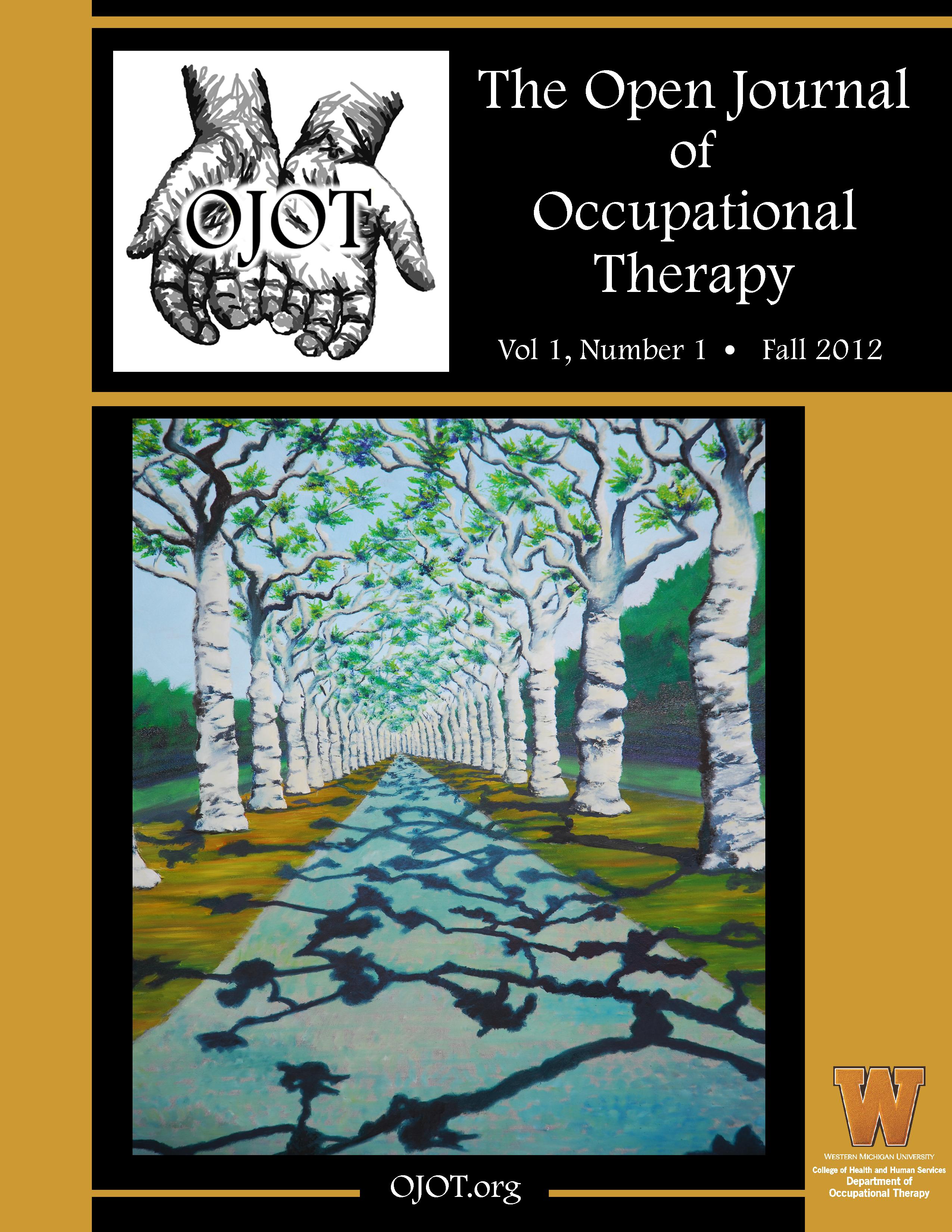ScholarWorks > HHS > OT > OJOT > Vol. 6 > Iss. 1 (2018)
Credentials Display
Verna G. Eschenfelder, PhD, OTR/L; Christina M. Gavalas;Taylor M. Pendergast; Colleen A. Gorman
Abstract
Background. The American Occupational Therapy Association and the American Medical Association have changed CPT codes to require a completed occupational profile at every evaluation and re-evaluation session for reimbursement as of January 1, 2017. A revitalization of art in occupational therapy has led to a recent increase in the evidence supporting the use of expressive art in practice. The benefits of expressive art can directly enhance the occupational profile required by these changing reimbursement requirements.
Methods. A scoping review method was applied in the current study. Out of 347 initial articles, 12 met the inclusion criteria and were analyzed through critical appraisal of topics and use of a matrix.
Results. Analysis of the data elucidated emergent themes of expressive art’s positive effects on verbal communication, the client’s therapeutic reflection, the accuracy of information, the clinician’s use of prompting, the therapeutic relationship, and client engagement.
Conclusion. Expressive art can strengthen the occupational profile and information-gathering process. The benefits related to using art in occupational therapy may enhance the complexity of the overall evaluation process, as described by newly changing CPT codes. Expressive art techniques can facilitate the development of client-centered goals and individualized intervention planning, creating an overall positive service delivery process.
Recommended Citation
Eschenfelder, V. G., Gavalas, C. M., Pendergast, T. M., & Gorman, C. A. (2018). Expressive Art to Facilitate the Development of the Occupational Profile: A Scoping Review. The Open Journal of Occupational Therapy, 6(1). https://doi.org/10.15453/2168-6408.1360


